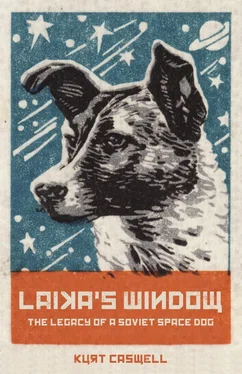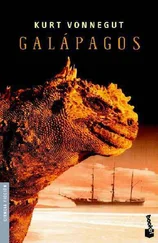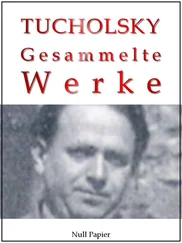Taylor’s vision was a spaceship containing two thousand nuclear bombs that dispensed through a hole one at a time and exploded beneath the ship, propelling it upward. Building the bombs was the easy part. In order to learn how to deploy them, Project Orion consulted with Coca-Cola to understand their coin-operated Coke dispensing machines. The bottom of the spacecraft had to be constructed of something that could take multiple nuclear blasts. Taylor considered steel, copper, aluminum, and wood. The team resolved that some kind of fiberglass might work best. The bombs would be of increasingly higher yield, pushing the ship upward out of the Earth’s atmosphere, until the fiftieth bomb, which, “at twenty kilotons,” writes McPhee, “would be of the force that destroyed Nagasaki.” Such immense power (unachievable using liquid-or solid-fueled rockets) could lift a payload of a thousand tons into orbit and then beyond. The team imagined a spaceship shaped like a bullet about the size of a ten-story building with all the amenities of a cruise ship inside: state rooms, exercise and recreation rooms, a restaurant with an observation deck, a level devoted to gardens and food animals. The ship would launch from Jackass Flats, Nevada, or possibly from a barge at sea, and it would be, Taylor told McPhee, “the most sensational thing anyone ever saw.” With Orion, the team determined, human beings would land on Mars by 1965 and travel to Saturn by 1970.
In 1961 Taylor traveled to Huntsville, Alabama, and presented his idea to Werner von Braun, who became its powerful proponent. A believer in the necessity of a voyage to Mars, von Braun had written a book on the subject more than ten years earlier, Das Marsprojekt , which was later translated into English as The Mars Project . It is, writes Stephen Petranek in How We’ll Live on Mars , “a work of extraordinary foresight and sheer engineering genius.”
The US Air Force backed Project Orion but had to justify it as a military endeavor. A spacecraft powered by nuclear explosions could also resist nuclear explosions fired at it, and so could safely rain down bombs on the enemy without fear of counterattack. McPhee writes that the Strategic Air Command’s general Thomas Power said, “Whoever builds Orion will control the Earth!” Faced with this irony—a project founded on using nuclear bombs to elevate and advance human life instead of killing people, backed by a military that wanted to use that same technology to kill people—Taylor was convinced that they were close to getting it done. McPhee quotes Taylor: “Just a few little twists of events and everything we were trying to do with Orion would have come through.” Once up and running, both Taylor and Dyson were convinced, Orion would throw open the door to the mysteries of the universe, and that new knowledge would safeguard life on Earth.
But Project Orion was anathema to many scientists and engineers, then and now, especially when it comes to safeguarding life on Earth. Detonating nuclear bombs in the Earth’s atmosphere produces radioactive fallout, radiation that rains back down onto Earth. By the early 1960s scientists were measuring strontium-90 in cow’s milk, a radioactive isotope prevalent in fallout from the routine testing of nuclear bombs, primarily by the US and the USSR. When ingested, strontium-90 finds its way into bones and can cause bone cancer, cancers of the surrounding tissues, and leukemia. “It was well known by the early 1960s, the dangers of massive amounts of radiation being dumped into the atmosphere,” astronomer James Schombert told me. “How this was ignored by Orion designers reminds me of the way tobacco companies ignored the lung cancer statistics.” President Kennedy signed the Partial Test Ban Treaty in 1963, banning nuclear explosions underwater, in the atmosphere, and in space, which killed Project Orion but did not kill the dream of Mars.
¤
For the remainder of the 1960s, the US and the USSR were locked in a race to put men on the moon. When the US won that race with the Apollo program, the USSR turned to research projects on crewed space stations in Earth orbit. After the final moon landing in 1972, the US joined the USSR in that effort. To move supplies and crews back and forth between Earth and orbit, the Soviets employed the same basic rocket technology they had used to put up the Sputnik satellites, and the US went to work on the space shuttle program. (Concurrent with the US space shuttle program, the Soviets were working on a similar shuttle orbiter, the Buran. After one successful unmanned flight in 1988, the program was canceled with the dissolution of the USSR.) While the space shuttle has often been called a marvel of technology, it was also limited and limiting. It proved to be “fragile, expensive, and dangerous,” writes Guy Gugliotta in “Space: The Next Generation,” his 2007 story for National Geographic . “And since it cannot fly beyond low-Earth orbit, it has transformed spaceflight into a series of high-tech cruises to nowhere.” After the Apollo moon missions, von Braun argued fervently for a mission to Mars, and with Ted Taylor’s ideas in mind he thought he could do it using nuclear-powered spacecraft. From the time of Laika’s flight into orbit, it took just over a decade to put men on the moon. During that time of great technological advancement and creativity driven by Cold War competition, if the US had pushed past the moon instead of investing in the space shuttle, many space industry experts argue, we would have a working outpost on Mars today. Instead of Mars, President Nixon backed the space shuttle program, because in addition to its science mission it could be used to deploy and repair spy satellites. This choice, writes Petranek, “threw the US space program into a long, slow decline and sent [NASA], if not the American people, into a void that lacked passion and vision.”
Decades later President George W. Bush, followed by Presidents Barack Obama and Donald Trump, renewed the US government’s commitment to the space program and set their sights on a future crewed mission to Mars. While the Cold War fueled the competition that led to that string of stunning space achievements between 1957 and 1972, this time around we’re not in a race so much as on a journey. President Bush supported getting to Mars a little bit at a time. But that has proven more sluggish and difficult than it first appeared, which has opened a niche for the development of a robust private space industry in the United States. Leading the way are Elon Musk’s Space Exploration Technologies, or SpaceX, and Amazon founder Jeff Bezos’s Blue Origin. United Launch Alliance, a joint effort of Boeing and Lockheed Martin, belongs in this company, but unlike the others it is a company built mostly with government money. Like the VFR and Project Orion, what is so exciting about these companies is that they have become the driving force in space exploration because they are not beholden to a ponderous government and its political scrapping for the passing glory of individual and party power, and they incite the kind of competition that fuels and drives research and development, including reusable rockets (the wheelhouse of SpaceX), which promises to drive down costs.
Elon Musk and SpaceX, along with Robert Zubrin and the Mars Society, are at the helm of humanity’s dream of a crewed mission to Mars. The Mars Society’s “Founding Declaration” makes a compelling case. We must go to Mars to learn about Mars, which will in turn teach us about the Earth. We must go for the challenge, because we are a species that thrives on challenge. For most of human history, war has been that challenge and a prime motivation for advances in medicine and technology. But we have before us an opportunity to replace war with the challenge of cosmic exploration. “The time is past for human societies to use war as a driving stress for technological progress,” states the declaration. We must go for the future of humanity, not for ourselves but for generations yet unborn. A permanent settlement on Mars will revitalize our belief in and our valuing of human life. Elon Musk agrees. “Musk is in love with the idea that humans should become a spacefaring society,” writes Stephen Petranek in How We’ll Live on Mars . SpaceX’s mission in these early decades of the twenty-first century sounds a lot like Ted Taylor’s Project Orion from the 1950s: make space travel more affordable and go to Mars. In late 2016 Musk rolled out his detailed plan to colonize Mars, shuttling people and equipment in SpaceX spacecraft. China, India, Russia, Japan, the European Space Agency, private industry, and NASA have all been stirred to think and move in this direction. China has even appointed an ambassador to Mars, NBA star Yao Ming. Mars will be, Musk tells us, the greatest adventure in the history of humankind.
Читать дальше












